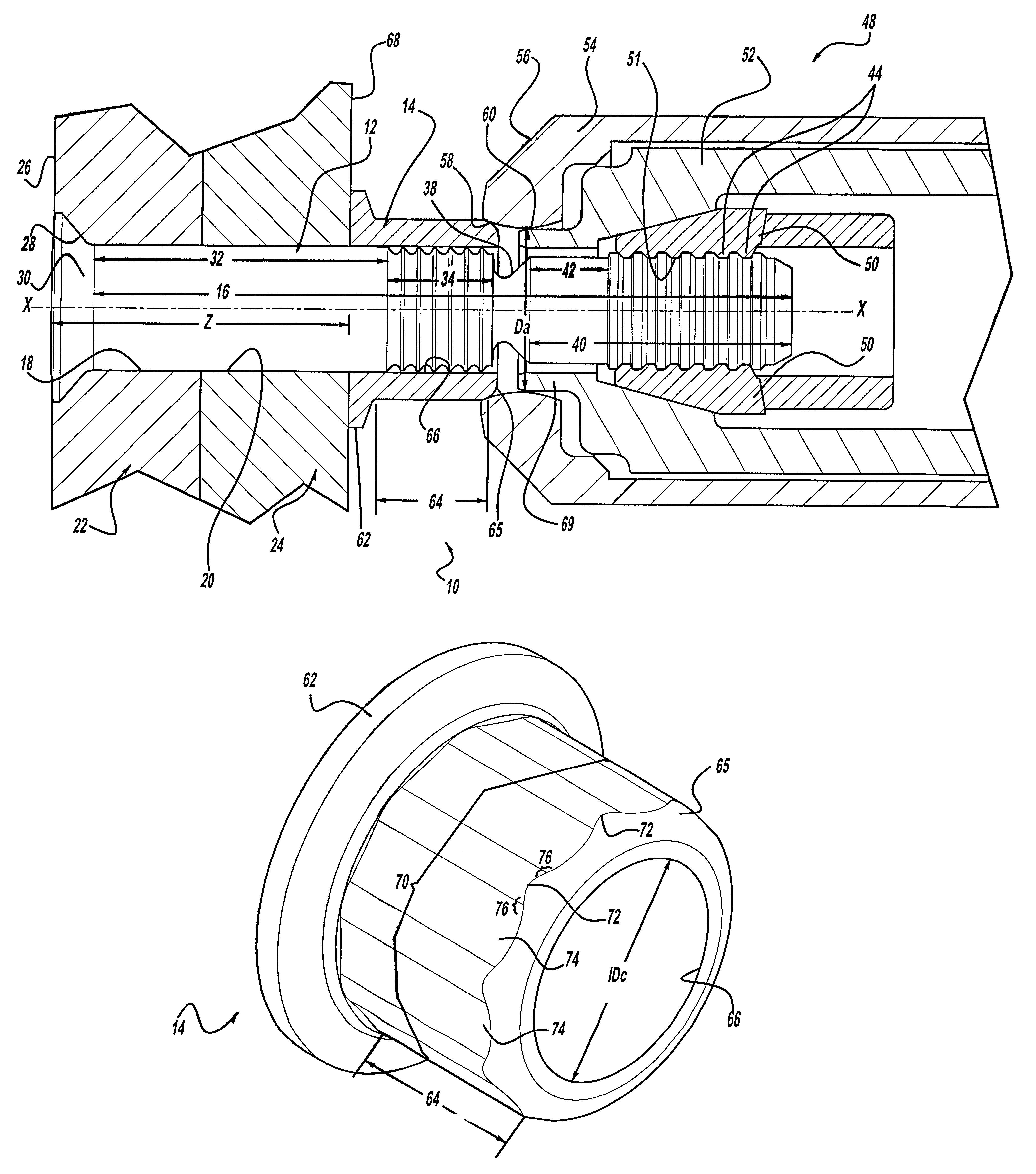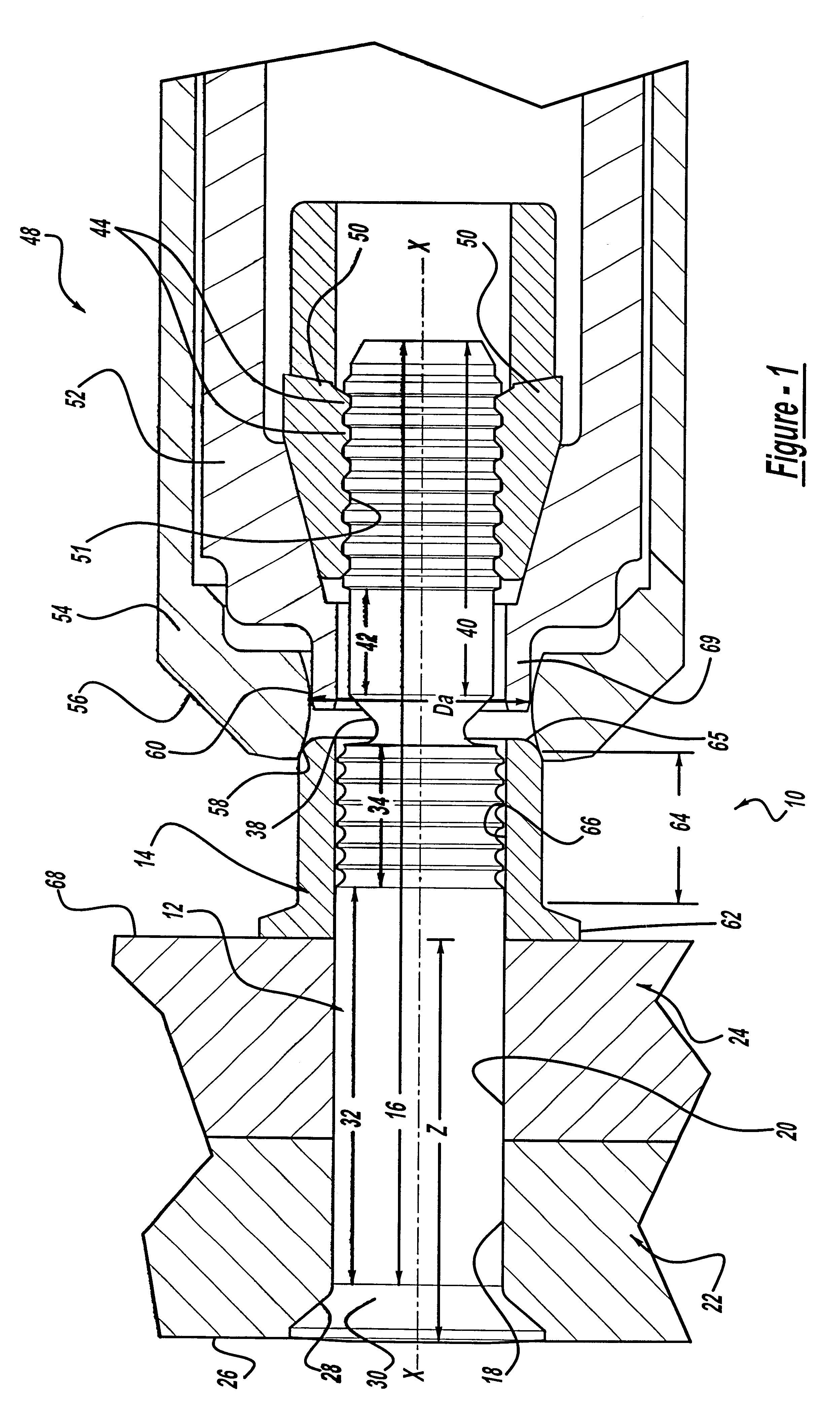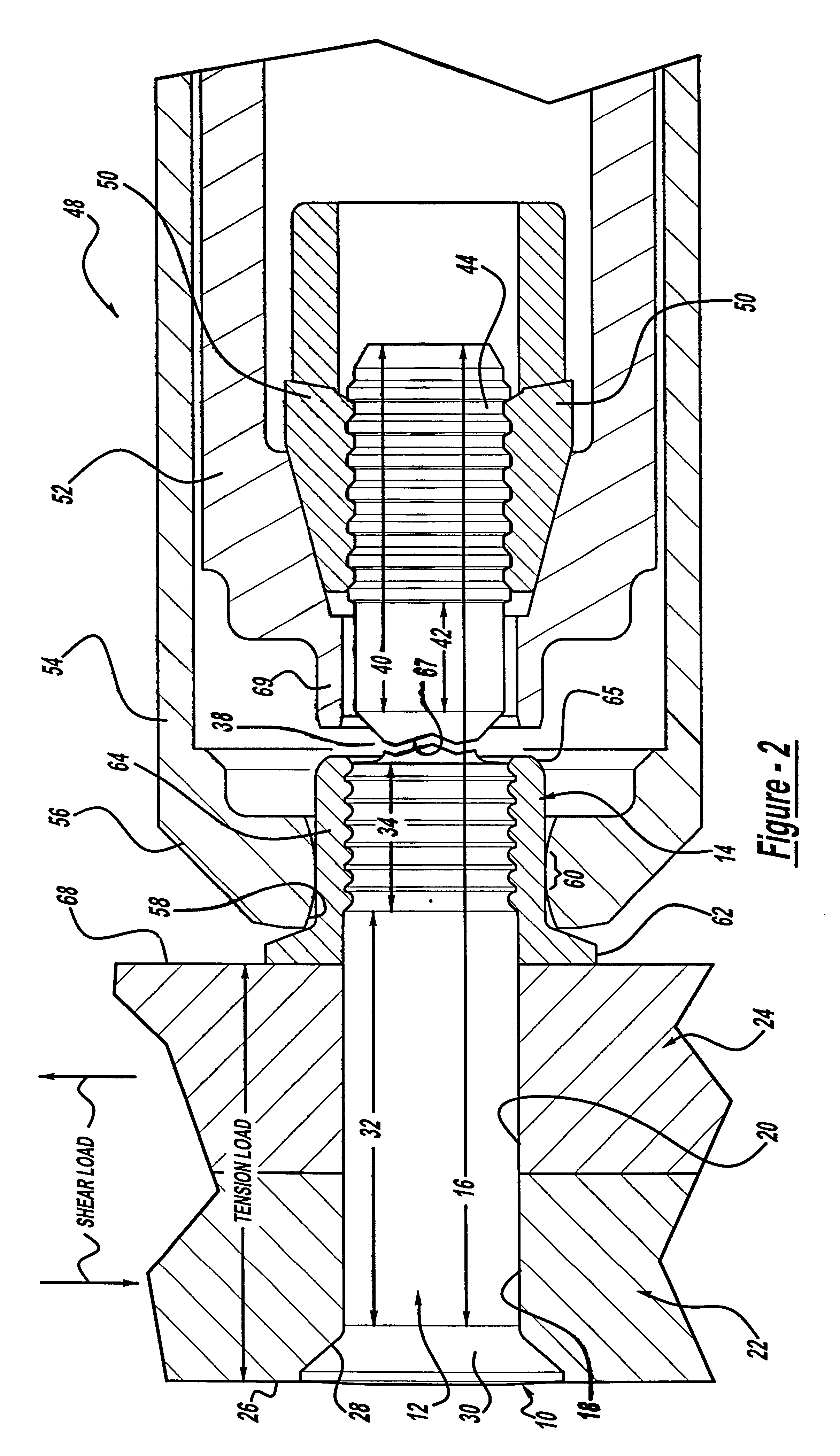Swage type fastener with low swage load
a fastener and swage type technology, applied in the direction of fastening means, screws, threaded fasteners, etc., can solve the problems of low impact strength, localized delamination or crushing, and small residual gaps
- Summary
- Abstract
- Description
- Claims
- Application Information
AI Technical Summary
Benefits of technology
Problems solved by technology
Method used
Image
Examples
Embodiment Construction
As noted the principles of the present invention are advantageous for swage fasteners and particularly for pull type swage fasteners and especially for pull type swage fasteners with a severable pintail and for fastening a workpiece of plastic, composite type materials as noted. An example of such fastener is illustrated in the drawings.
Looking now to FIGS. 1 and 2, a fastener 10 of the present invention is shown and includes a pin 12 and a tubular, flanged collar 14. The pin 12 has an elongated shank 16 of a circular cross section with a central axis X which shank 16 can extend through aligned bores or openings 18 and 20 in a pair of workpieces 22 and 24 , respectively, to be secured together. The X axis is colinear with a Z axis which is substantially normal to the end surfaces of the workpieces 22 and 24 and is central to the axis of bores or openings 18 and 20. In the embodiment shown, the workpieces 22 and 24 are made of lightweight materials, with the outer workpiece 22 being ...
PUM
| Property | Measurement | Unit |
|---|---|---|
| Da | aaaaa | aaaaa |
| Da | aaaaa | aaaaa |
| diameter Da | aaaaa | aaaaa |
Abstract
Description
Claims
Application Information
 Login to View More
Login to View More - R&D
- Intellectual Property
- Life Sciences
- Materials
- Tech Scout
- Unparalleled Data Quality
- Higher Quality Content
- 60% Fewer Hallucinations
Browse by: Latest US Patents, China's latest patents, Technical Efficacy Thesaurus, Application Domain, Technology Topic, Popular Technical Reports.
© 2025 PatSnap. All rights reserved.Legal|Privacy policy|Modern Slavery Act Transparency Statement|Sitemap|About US| Contact US: help@patsnap.com



